Brealey, Myers. Principles of Corporate Finance. 7th edition
Подождите немного. Документ загружается.

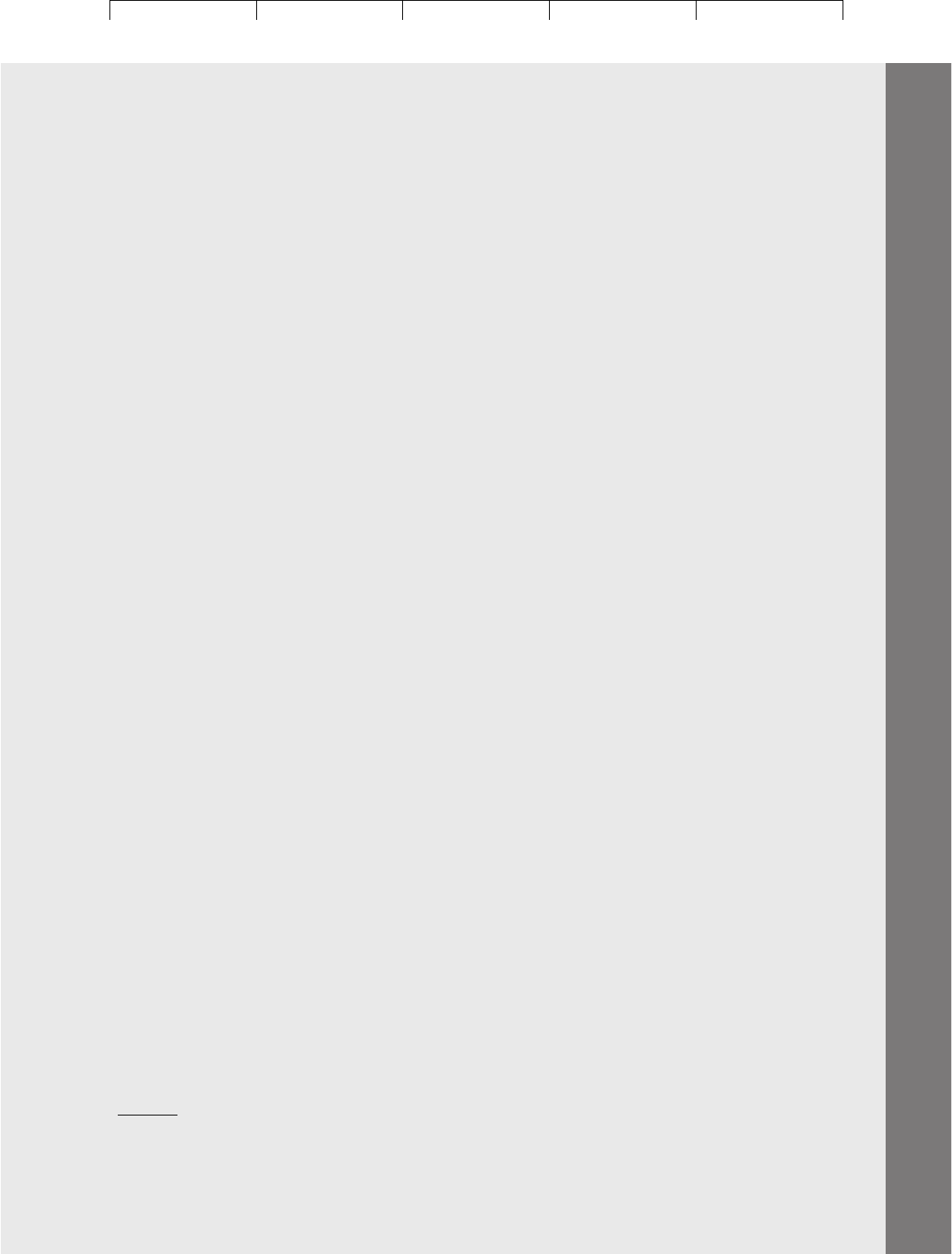
Brealey−Meyers:
Principles of Corporate
Finance, Seventh Edition
V. Dividend Policy and
Capital Structure
16. The Dividend
Controversy
© The McGraw−Hill
Companies, 2003
CHAPTER 16 The Dividend Controversy 461
Visit us at www.mhhe.com/bm7e
13. Comment briefly on each of the following statements:
a. “Unlike American firms, which are always being pressured by their shareholders
to increase dividends, Japanese companies pay out a much smaller proportion of
earnings and so enjoy a lower cost of capital.”
b. “Unlike new capital, which needs a stream of new dividends to service it, retained
earnings have zero cost.”
c. “If a company repurchases stock instead of paying a dividend, the number of
shares falls and earnings per share rise. Thus stock repurchase must always be
preferred to paying dividends.”
14. Suppose the Miller–Modigliani (MM) theory of dividend policy is correct. How would
a government-imposed dividend freeze affect (a) stock prices? (b) capital investment?
15. Formaggio Vecchio has just announced its regular quarterly cash dividend of $1 per
share.
a. When will the stock price fall to reflect this dividend payment—on the record date,
the ex-dividend date, or the payment date?
b. Assume that there are no taxes. By how much is the stock price likely to fall?
c. Now assume that all investors pay tax of 30 percent on dividends and nothing on
capital gains. What is the likely fall in the stock price?
d. Suppose, finally, that everything is the same as in part (c), except that security
dealers pay tax on both dividends and capital gains. How would you expect your
answer to (c) to change? Explain.
16. Refer back to question 15. Assume no taxes and a stock price immediately after the div-
idend announcement of $100.
a. If you own 100 shares, what is the value of your investment? How does the
dividend payment affect your wealth?
b. Now suppose that Formaggio Vecchio cancels the dividend payment and
announces that it will repurchase 1 percent of its stock at $100. Do you rejoice or
yawn? Explain.
17. The shares of A and B both sell for $100 and offer a pretax return of 10 percent. How-
ever, in the case of company A the return is entirely in the form of dividend yield (the
company pays a regular annual dividend of $10 a share), while in the case of B the re-
turn comes entirely as capital gain (the shares appreciate by 10 percent a year). Suppose
that dividends and capital gains are both taxed at 30 percent. What is the after-tax re-
turn on share A? What is the after-tax return on share B to an investor who sells after
two years? What about an investor who sells after 10 years?
18. a. The Horner Pie Company pays a quarterly dividend of $1. Suppose that the stock
price is expected to fall on the ex-dividend date by $.90. Would you prefer to buy on
the with-dividend date or the ex-dividend date if you were (i) a tax-free investor,
(ii) an investor with a marginal tax rate of 40 percent on income and 16 percent on
capital gains?
b. In a study of ex-dividend behavior, Elton and Gruber
44
estimate that the stock
price fell on the average by 85 percent of the dividend. Assuming that the tax rate
on capital gains was 40 percent of the rate on income tax, what did Elton and
Gruber’s result imply about investors’ marginal rate of income tax?
c. Elton and Gruber also observed that the ex-dividend price fall was different for
high-payout stocks and for low-payout stocks. Which group would you expect to
show the larger price fall as a proportion of the dividend?
d. Would the fact that investors can trade stocks freely around the ex-dividend date
alter your interpretation of Elton and Gruber’s study?
44
E. J. Elton and M. J. Gruber, “Marginal Stockholders’ Tax Rates and the Clientele Effect,” Review of Eco-
nomics and Statistics 52 (1970), pp. 68–74.
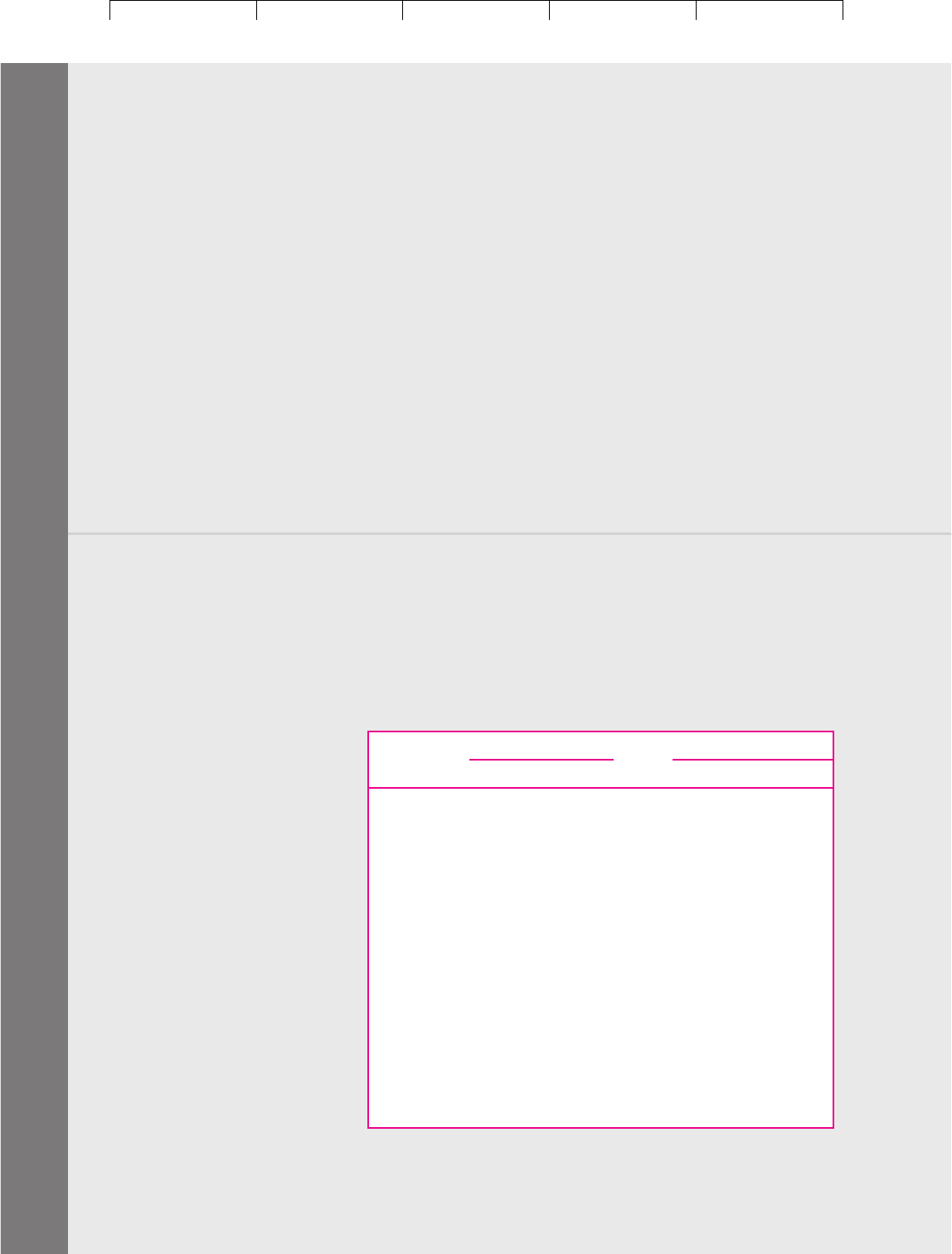
Brealey−Meyers:
Principles of Corporate
Finance, Seventh Edition
V. Dividend Policy and
Capital Structure
16. The Dividend
Controversy
© The McGraw−Hill
Companies, 2003
462 PART V Dividend Policy and Capital Structure
e. Suppose Elton and Gruber repeat their tests for the period after the 1986 Tax
Reform Act, when the tax rate was the same on dividends and capital gains. How
would you expect their results to change?
19. In the United States, where there is a two-tier tax system, which investors are indiffer-
ent to the dividend payout ratio? How about investors in Australia, where there is an
imputation tax system? Describe how the Australian system works and what it could
imply for dividend policy.
20. The middle-of-the-road party holds that dividend policy doesn’t matter because the
supply of high-, medium-, and low-payout stocks has already adjusted to satisfy in-
vestors’ demands. Investors who like generous dividends hold stocks which give them
all the dividends that they want. Investors who want capital gains see a surfeit of low-
payout stocks to choose from. Thus, high-payout firms cannot gain by transforming to
low-payout firms, or vice versa.
Suppose the government equalizes the tax rates on dividends and capital gains. Sup-
pose that before this change the supply of dividends matched investor needs. How would
you expect the tax change to affect the total cash dividends paid by U.S. corporations and
the proportion of high- versus low-payout companies? Would dividend policy still be ir-
relevant after any dividend supply adjustments are completed? Explain.
CHALLENGE
QUESTIONS
1. Table 16.4 lists the dividends and earnings per share (EPS) for Merck and International
Paper. Estimate the target payout for each company and the rate at which the dividend
is adjusted toward the target. Suppose that in 2001 Merck’s earnings increase to $5 a
share and International Paper’s earnings increase to $3 per share. How would you pre-
dict their dividends to change?
2. Consider the following two statements: “Dividend policy is irrelevant,” and “Stock
price is the present value of expected future dividends.” (See Chapter 4.) They sound
contradictory. This question is designed to show that they are fully consistent.
Visit us at www.mhhe.com/bm7e
Merck International Paper
Year EPS Dividend EPS Dividend
1983 .17 .08 1.16 .6
1984 .19 .09 .47 .6
1985 .21 .09 .54 .6
1986 .27 .11 1.45 .6
1987 .37 .14 1.84 .61
1988 .51 .22 3.28 .64
1989 .63 .28 3.86 .77
1990 .76 .32 2.60 .84
1991 .92 .39 1.80 .84
1992 1.56 .46 0.58 .84
1993 1.44 .52 1.17 .84
1994 1.19 .57 1.73 .84
1995 1.32 .62 4.50 .92
1996 1.56 .71 1.04 1.00
1997 1.87 .85 ⫺.20 1.00
1998 2.15 .95 .60 1.00
1999 2.45 1.10 .48 1.00
2000 2.90 1.21 .32 1.00
TABLE 16.4
See Challenge Question 1.
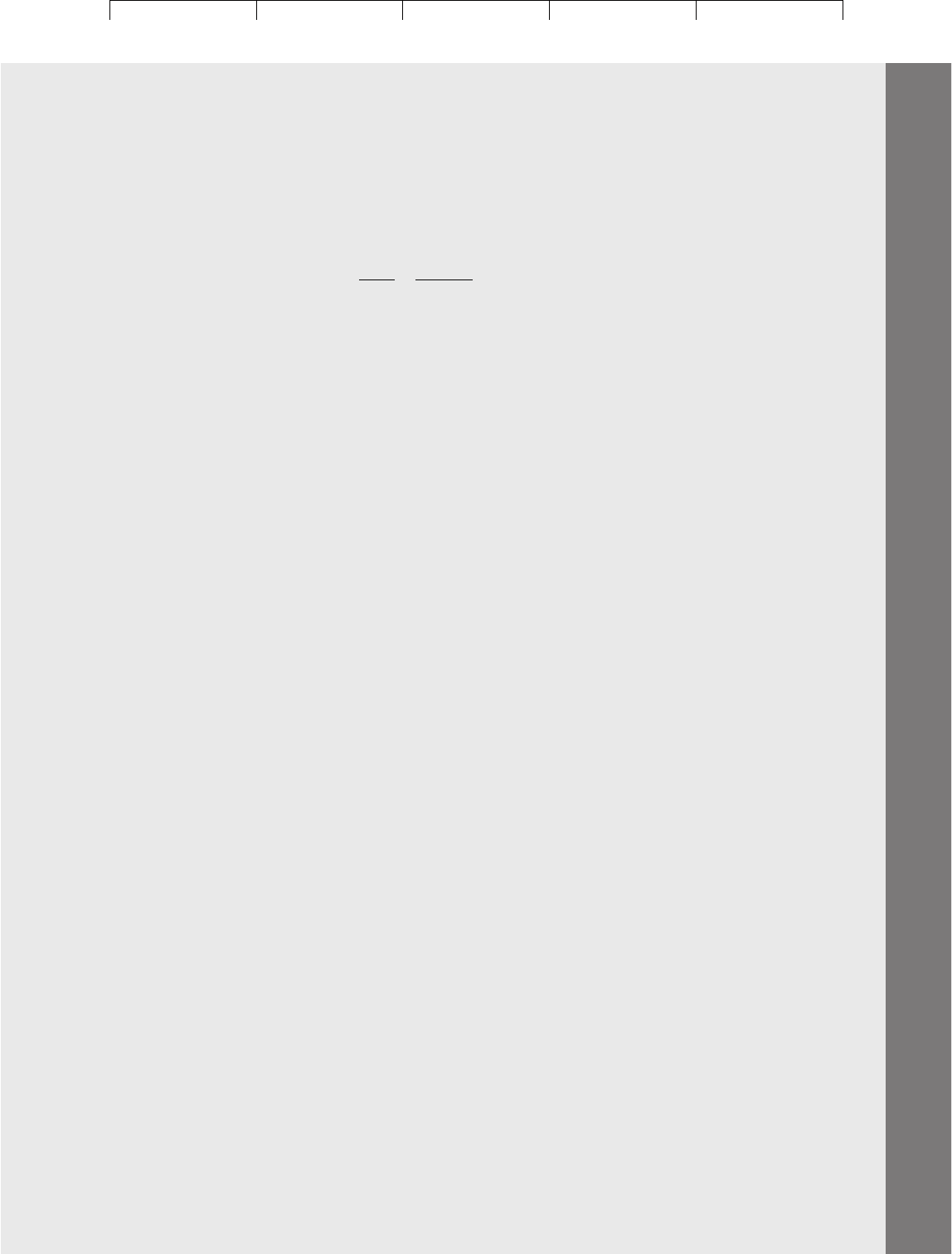
Brealey−Meyers:
Principles of Corporate
Finance, Seventh Edition
V. Dividend Policy and
Capital Structure
16. The Dividend
Controversy
© The McGraw−Hill
Companies, 2003
CHAPTER 16 The Dividend Controversy 463
Visit us at www.mhhe.com/bm7e
The current price of the shares of Charles River Mining Corporation is $50. Next
year’s earnings and dividends per share are $4 and $2, respectively. Investors expect
perpetual growth at 8 percent per year. The expected rate of return demanded by in-
vestors is r ⫽ 12 percent.
We can use the perpetual-growth model to calculate stock price.
Suppose that Charles River Mining announces that it will switch to a 100 percent
payout policy, issuing shares as necessary to finance growth. Use the perpetual-growth
model to show that current stock price is unchanged.
3. Suppose management is expected to make a fixed-price tender offer to repurchase half
of the stock at a 20 percent premium. How, if at all, would that affect today’s market
price of the company’s shares?
4. Adherents of the “dividends-are-good” school sometimes point to the fact that stocks
with high yields tend to have above-average price–earnings multiples. Is this evidence
convincing? Discuss.
P
0
⫽
DIV
r ⫺ g
⫽
2
.12 ⫺ .08
⫽ 50

Brealey−Meyers:
Principles of Corporate
Finance, Seventh Edition
V. Dividend Policy and
Capital Structure
17. Does Debt policy
Matter?
© The McGraw−Hill
Companies, 2003
CHAPTER SEVENTEEN
464
DOES DEBT
POLICY MATTER?

Brealey−Meyers:
Principles of Corporate
Finance, Seventh Edition
V. Dividend Policy and
Capital Structure
17. Does Debt policy
Matter?
© The McGraw−Hill
Companies, 2003
A FIRM’S BASIC resource is the stream of cash flows produced by its assets. When the firm is financed
entirely by common stock, all those cash flows belong to the stockholders. When it issues both debt
and equity securities, it undertakes to split up the cash flows into two streams, a relatively safe stream
that goes to the debtholders and a more risky one that goes to the stockholders.
The firm’s mix of different securities is known as its capital structure. The choice of capital struc-
ture is fundamentally a marketing problem. The firm can issue dozens of distinct securities in count-
less combinations, but it attempts to find the particular combination that maximizes its overall mar-
ket value.
Are these attempts worthwhile? We must consider the possibility that no combination has any greater
appeal than any other. Perhaps the really important decisions concern the company’s assets, and deci-
sions about capital structure are mere details—matters to be attended to but not worried about.
Modigliani and Miller (MM), who showed that dividend policy doesn’t matter in perfect capital
markets, also showed that financing decisions don’t matter in perfect markets.
1
Their famous “propo-
sition I” states that a firm cannot change the total value of its securities just by splitting its cash flows
into different streams: The firm’s value is determined by its real assets, not by the securities it issues.
Thus capital structure is irrelevant as long as the firm’s investment decisions are taken as given.
MM’s proposition I allows complete separation of investment and financing decisions. It implies
that any firm could use the capital budgeting procedures presented in Chapters 2 through 12 with-
out worrying about where the money for capital expenditures comes from. In those chapters, we as-
sumed all-equity financing without really thinking about it. If proposition I holds, that is exactly the
right approach.
We believe that in practice capital structure does matter, but we nevertheless devote all of this
chapter to MM’s argument. If you don’t fully understand the conditions under which MM’s theory
holds, you won’t fully understand why one capital structure is better than another. The financial man-
ager needs to know what kinds of market imperfection to look for.
In Chapter 18 we will undertake a detailed analysis of the imperfections that are most likely to
make a difference, including taxes, the costs of bankruptcy, and the costs of writing and enforcing
complicated debt contracts. We will also argue that it is naive to suppose that investment and fi-
nancing decisions can be completely separated.
But in this chapter we isolate the decision about capital structure by holding the decision about
investment fixed. We also assume that dividend policy is irrelevant.
465
17.1 THE EFFECT OF LEVERAGE IN A COMPETITIVE
TAX-FREE ECONOMY
We have referred to the firm’s choice of capital structure as a marketing problem. The
financial manager’s problem is to find the combination of securities that has the
greatest overall appeal to investors—the combination that maximizes the market
value of the firm. Before tackling this problem, we ought to make sure that a pol-
icy which maximizes firm value also maximizes the wealth of the shareholders.
1
F. Modigliani and M. H. Miller, “The Cost of Capital, Corporation Finance and the Theory of Invest-
ment,” American Economic Review 48 (June 1958), pp. 261–297. MM’s basic argument was anticipated in
1938 by J. B. Williams and to some extent by David Durand. See J. B. Williams, The Theory of Investment
Value, Harvard University Press, Cambridge, MA, 1938; and D. Durand, “Cost of Debt and Equity
Funds for Business: Trends and Problems of Measurement,” in Conference on Research in Business Finance,
National Bureau of Economic Research, New York, 1952.

Brealey−Meyers:
Principles of Corporate
Finance, Seventh Edition
V. Dividend Policy and
Capital Structure
17. Does Debt policy
Matter?
© The McGraw−Hill
Companies, 2003
Let D and E denote the market values of the outstanding debt and equity of the
Wapshot Mining Company. Wapshot’s 1,000 shares sell for $50 apiece. Thus
Wapshot has also borrowed $25,000, and so V, the aggregate market value of all
Wapshot’s outstanding securities, is
Wapshot’s stock is known as levered equity. Its stockholders face the benefits and
costs of financial leverage, or gearing. Suppose that Wapshot “levers up” still fur-
ther by borrowing an additional $10,000 and paying the proceeds out to share-
holders as a special dividend of $10 per share. This substitutes debt for equity cap-
ital with no impact on Wapshot’s assets.
What will Wapshot’s equity be worth after the special dividend is paid? We have
two unknowns, E and V:
V D E $75,000
E 1,000 50 $50,000
466 PART V
Dividend Policy and Capital Structure
Old debt $25,000
New debt $10,000
$35,000 D
Equity ? E
Firm value ? V
冧
If V is $75,000 as before, then E must be .
Stockholders have suffered a capital loss which exactly offsets the $10,000 special
dividend. But if V increases to, say, $80,000 as a result of the change in capital struc-
ture, then and the stockholders are $5,000 ahead. In general, any in-
crease or decrease in V caused by a shift in capital structure accrues to the firm’s
stockholders. We conclude that a policy which maximizes the market value of the
firm is also best for the firm’s stockholders.
This conclusion rests on two important assumptions: first, that Wapshot can ig-
nore dividend policy and, second, that after the change in capital structure the old
and new debt is worth $35,000.
Dividend policy may or may not be relevant, but there is no need to repeat the
discussion of Chapter 16. We need only note that shifts in capital structure some-
times force important decisions about dividend policy. Perhaps Wapshot’s cash
dividend has costs or benefits which should be considered in addition to any ben-
efits achieved by its increased financial leverage.
Our second assumption that old and new debt ends up worth $35,000 seems in-
nocuous. But it could be wrong. Perhaps the new borrowing has increased the risk
of the old bonds. If the holders of old bonds cannot demand a higher rate of inter-
est to compensate for the increased risk, the value of their investment is reduced.
In this case Wapshot’s stockholders gain at the expense of the holders of old bonds
even though the overall value of the debt and equity is unchanged.
But this anticipates issues better left to Chapter 18. In this chapter we will as-
sume that any issue of debt has no effect on the market value of existing debt.
2
E $45,000
V D 75,000 35,000 $40,000
2
See E. F. Fama, “The Effects of a Firm’s Investment and Financing Decisions,” American Economic Re-
view 68 (June 1978), pp. 272–284, for a rigorous analysis of the conditions under which a policy of max-
imizing the value of the firm is also best for the stockholders.
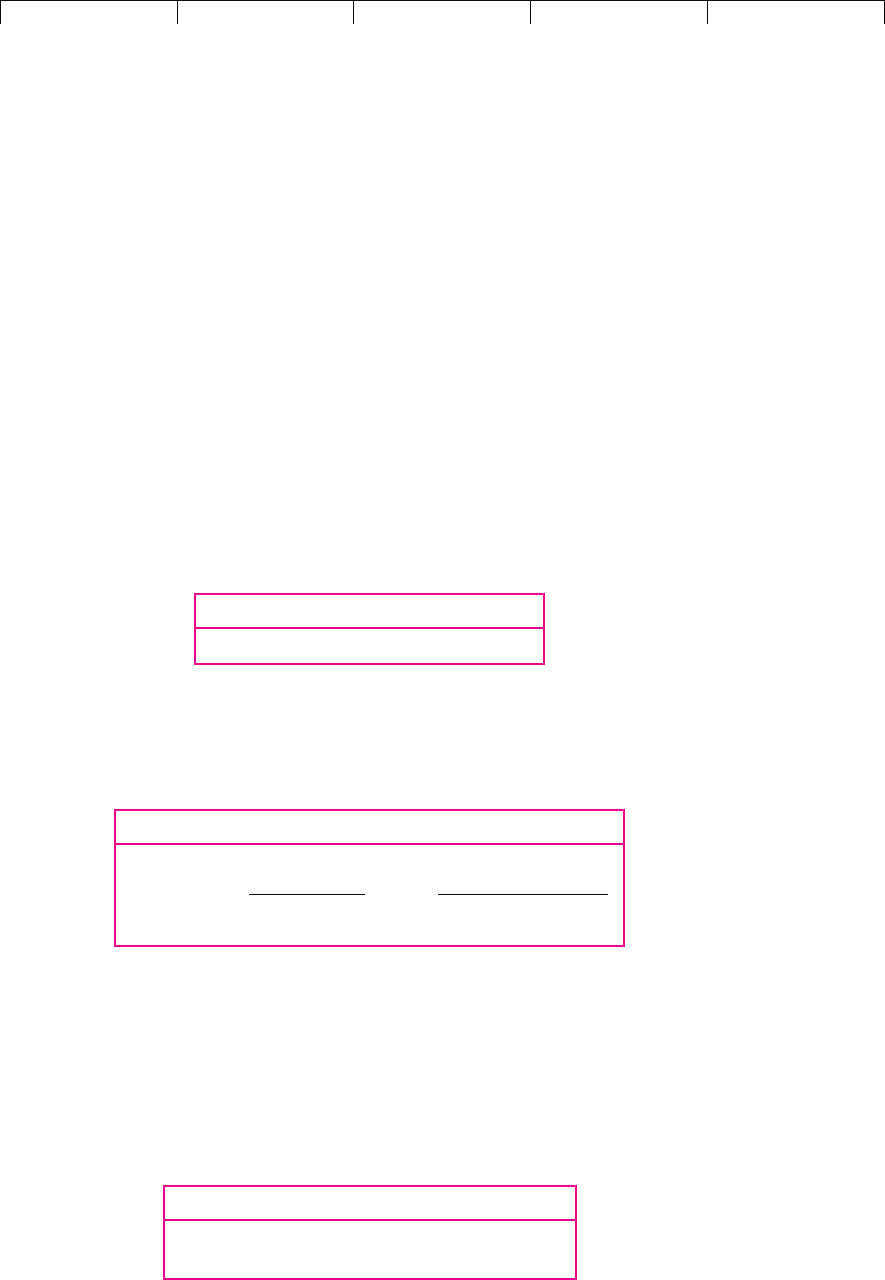
Brealey−Meyers:
Principles of Corporate
Finance, Seventh Edition
V. Dividend Policy and
Capital Structure
17. Does Debt policy
Matter?
© The McGraw−Hill
Companies, 2003
Enter Modigliani and Miller
Let us accept that the financial manager would like to find the combination of se-
curities that maximizes the value of the firm. How is this done? MM’s answer is
that the financial manager should stop worrying: In a perfect market any combi-
nation of securities is as good as another. The value of the firm is unaffected by its
choice of capital structure.
You can see this by imagining two firms that generate the same stream of oper-
ating income and differ only in their capital structure. Firm U is unlevered. There-
fore the total value of its equity is the same as the total value of the firm .
Firm, L, on the other hand, is levered. The value of its stock is, therefore, equal to
the value of the firm less the value of the debt: .
Now think which of these firms you would prefer to invest in. If you don’t want
to take much risk, you can buy common stock in the unlevered firm U. For exam-
ple, if you buy 1 percent of firm U’s shares, your investment is and you are
entitled to 1 percent of the gross profits:
.01
V
U
E
L
V
L
D
L
V
U
E
U
CHAPTER 17 Does Debt Policy Matter? 467
Dollar Investment Dollar Return
.01 Profits.01V
U
Now compare this with an alternative strategy. This is to purchase the same frac-
tion of both the debt and the equity of firm L. Your investment and return would
then be as follows:
Dollar Investment Dollar Return
Debt .01 Interest
Equity
Total .01 Profits
.01V
L
.011D
L
E
L
2
.01
1Profits interest2.01E
L
.01D
L
Both strategies offer the same payoff: 1 percent of the firm’s profits. In well-
functioning markets two investments that offer the same payoff must have the
same cost. Therefore, must equal : The value of the unlevered firm
must equal the value of the levered firm.
Suppose that you are willing to run a little more risk. You decide to buy 1 per-
cent of the outstanding shares in the levered firm. Your investment and return are
now as follows:
.01V
L
.01V
U
Dollar Investment Dollar Return
.011V
L
D
L
2
.01
1Profits interest2.01E
L
But there is an alternative strategy. This is to borrow on your own account and
purchase 1 percent of the stock of the unlevered firm. In this case, your borrowing
.01D
L
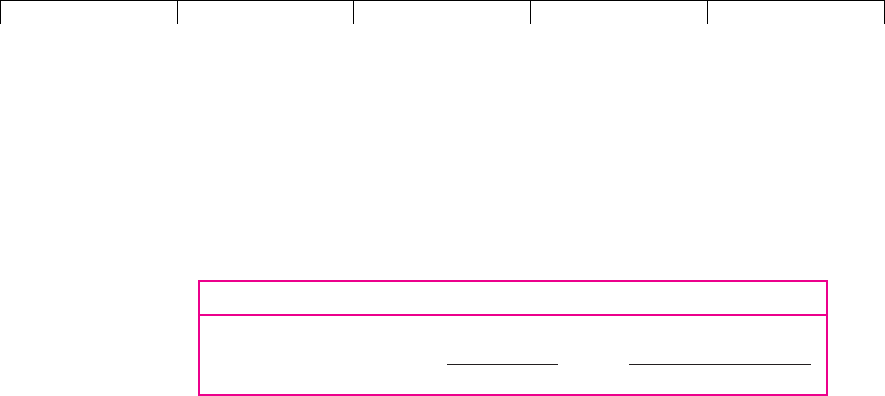
Brealey−Meyers:
Principles of Corporate
Finance, Seventh Edition
V. Dividend Policy and
Capital Structure
17. Does Debt policy
Matter?
© The McGraw−Hill
Companies, 2003
gives you an immediate cash inflow of , but you have to pay interest on your
loan equal to 1 percent of the interest that is paid by firm L. Your total investment
and return are, therefore, as follows:
.01D
L
468 PART V Dividend Policy and Capital Structure
Dollar Investment Dollar Return
Borrowing Interest
Equity .01 Profits
Total .01
1Profits interest2.011V
U
D
L
2
.01V
U
.01.01D
L
Again both strategies offer the same payoff: 1 percent of profits after interest.
Therefore, both investments must have the same cost. The quantity
must equal and must equal .
It does not matter whether the world is full of risk-averse chickens or venture-
some lions. All would agree that the value of the unlevered firm U must be equal
to the value of the levered firm L. As long as investors can borrow or lend on their
own account on the same terms as the firm, they can “undo” the effect of any
changes in the firm’s capital structure. This is the basis for MM’s famous proposi-
tion I: “The market value of any firm is independent of its capital structure.”
The Law of the Conservation of Value
MM’s argument that debt policy is irrelevant is an application of an astonishingly
simple idea. If we have two streams of cash flow, A and B, then the present value
of is equal to the present value of A plus the present value of B. We met this
principle of value additivity in our discussion of capital budgeting, where we saw
that in perfect capital markets the present value of two assets combined is equal to
the sum of their present values considered separately.
In the present context we are not combining assets but splitting them up. But
value additivity works just as well in reverse. We can slice a cash flow into as many
parts as we like; the values of the parts will always sum back to the value of the un-
sliced stream. (Of course, we have to make sure that none of the stream is lost in
the slicing. We cannot say, “The value of a pie is independent of how it is sliced,”
if the slicer is also a nibbler.)
This is really a law of conservation of value. The value of an asset is preserved re-
gardless of the nature of the claims against it. Thus proposition I: Firm value is de-
termined on the left-hand side of the balance sheet by real assets—not by the pro-
portions of debt and equity securities issued by the firm.
The simplest ideas often have the widest application. For example, we could ap-
ply the law of conservation of value to the choice between issuing preferred stock,
common stock, or some combination. The law implies that the choice is irrelevant,
assuming perfect capital markets and providing that the choice does not affect the
firm’s investment, borrowing, and operating policies. If the total value of the eq-
uity “pie” (preferred and common combined) is fixed, the firm’s owners (its com-
mon stockholders) do not care how this pie is sliced.
The law also applies to the mix of debt securities issued by the firm. The choices
of long-term versus short-term, secured versus unsecured, senior versus subordi-
nated, and convertible versus nonconvertible debt all should have no effect on the
overall value of the firm.
Combining assets and splitting them up will not affect values as long as they do
not affect an investor’s choice. When we showed that capital structure does not af-
A B
V
L
V
U
.011V
L
D
L
2
.011V
U
D
L
2
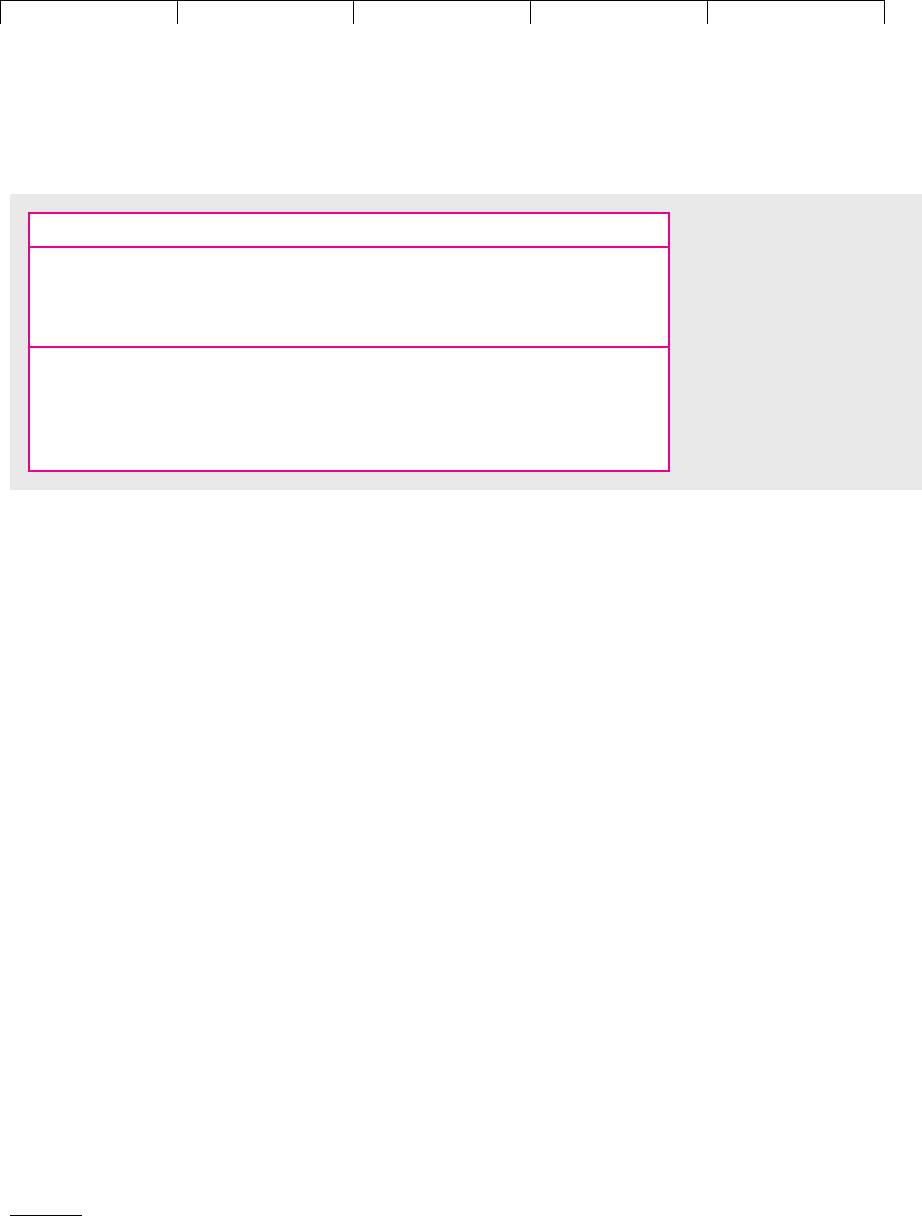
Brealey−Meyers:
Principles of Corporate
Finance, Seventh Edition
V. Dividend Policy and
Capital Structure
17. Does Debt policy
Matter?
© The McGraw−Hill
Companies, 2003
fect choice, we implicitly assumed that both companies and individuals can bor-
row and lend at the same risk-free rate of interest. As long as this is so, individuals
can undo the effect of any changes in the firm’s capital structure.
In practice corporate debt is not risk-free and firms cannot escape with rates of
interest appropriate to a government security. Some people’s initial reaction is that
this alone invalidates MM’s proposition. It is a natural mistake, but capital struc-
ture can be irrelevant even when debt is risky.
If a company borrows money, it does not guarantee repayment: It repays the debt
in full only if its assets are worth more than the debt obligation. The shareholders
in the company, therefore, have limited liability.
Many individuals would like to borrow with limited liability. They might, there-
fore, be prepared to pay a small premium for levered shares if the supply of levered
shares were insufficient to meet their needs.
3
But there are literally thousands of com-
mon stocks of companies that borrow. Therefore it is unlikely that an issue of debt
would induce them to pay a premium for your shares.
4
An Example of Proposition I
Macbeth Spot Removers is reviewing its capital structure. Table 17.1 shows its cur-
rent position. The company has no leverage and all the operating income is paid as
dividends to the common stockholders (we assume still that there are no taxes).
The expected earnings and dividends per share are $1.50, but this figure is by no
means certain—it could turn out to be more or less than $1.50. The price of each
share is $10. Since the firm expects to produce a level stream of earnings in perpe-
tuity, the expected return on the share is equal to the earnings–price ratio,
, or 15 percent.
5
1.50/10.00 .15
CHAPTER 17 Does Debt Policy Matter? 469
3
Of course, individuals could create limited liability if they chose. In other words, the lender could agree
that borrowers need repay their debt in full only if the assets of company X are worth more than a cer-
tain amount. Presumably individuals don’t enter into such arrangements because they can obtain lim-
ited liability more simply by investing in the stocks of levered companies.
4
Capital structure is also irrelevant if each investor holds a fully diversified portfolio. In that case he or
she owns all the risky securities offered by a company (both debt and equity). But anybody who owns
all the risky securities doesn’t care about how the cash flows are divided between different securities.
5
See Chapter 4, Section 4.
Data
Number of shares 1,000
Price per share $10
Market value of shares $10,000
Outcomes
Operating income ($) 500 1,000 1,500 2,000
Earnings per share ($) .50 1.00 1.50 2.00
Return on shares (%) 5 10 15 20
Expected
outcome
TABLE 17.1
Macbeth Spot Removers is
entirely equity-financed.
Although it expects to have
an income of $1,500 a year in
perpetuity, this income is not
certain. This table shows the
return to the stockholder
under different assumptions
about operating income. We
assume no taxes.
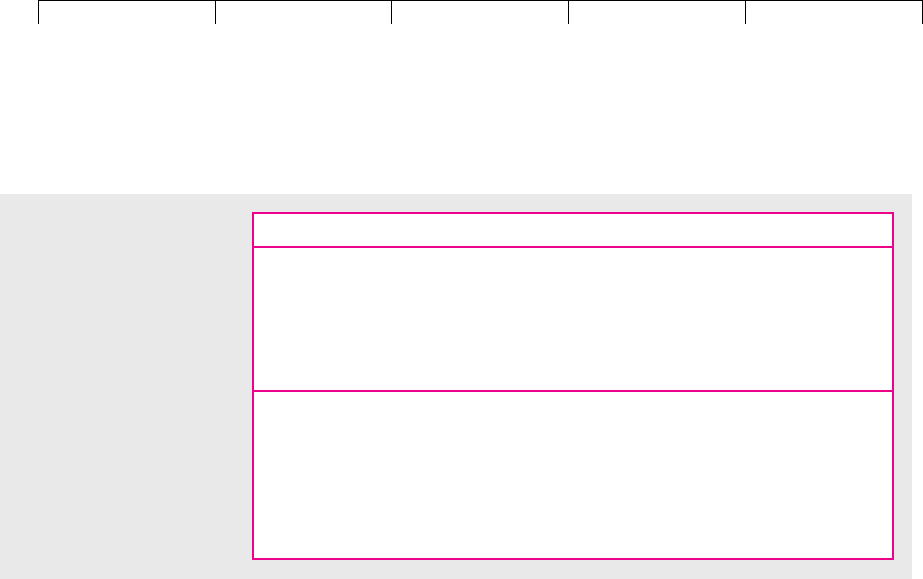
Brealey−Meyers:
Principles of Corporate
Finance, Seventh Edition
V. Dividend Policy and
Capital Structure
17. Does Debt policy
Matter?
© The McGraw−Hill
Companies, 2003
Ms. Macbeth, the firm’s president, has come to the conclusion that shareholders
would be better off if the company had equal proportions of debt and equity. She
therefore proposes to issue $5,000 of debt at an interest rate of 10 percent and use
the proceeds to repurchase 500 shares. To support her proposal, Ms. Macbeth has
analyzed the situation under different assumptions about operating income. The
results of her calculations are shown in Table 17.2.
In order to see more clearly how leverage would affect earnings per share, Ms.
Macbeth has also produced Figure 17.1. The burgundy line shows how earnings
per share would vary with operating income under the firm’s current all-equity fi-
nancing. It is, therefore, simply a plot of the data in Table 17.1. The blue line shows
how earnings per share would vary given equal proportions of debt and equity. It
is, therefore, a plot of the data in Table 17.2.
Ms. Macbeth reasons as follows: “It is clear that the effect of leverage depends
on the company’s income. If income is greater than $1,000, the return to the equity
holder is increased by leverage. If it is less than $1,000, the return is reduced by lever-
age. The return is unaffected when operating income is exactly $1,000. At this point
the return on the market value of the assets is 10 percent, which is exactly equal to
the interest rate on the debt. Our capital structure decision, therefore, boils down
to what we think about income prospects. Since we expect operating income to be
above the $1,000 break-even point, I believe we can best help our shareholders by
going ahead with the $5,000 debt issue.”
As financial manager of Macbeth Spot Removers, you reply as follows: “I
agree that leverage will help the shareholder as long as our income is greater than
$1,000. But your argument ignores the fact that Macbeth’s shareholders have the
alternative of borrowing on their own account. For example, suppose that an in-
vestor borrows $10 and then invests $20 in two unlevered Macbeth shares. This
person has to put up only $10 of his or her own money. The payoff on the in-
vestment varies with Macbeth’s operating income, as shown in Table 17.3. This
is exactly the same set of payoffs as the investor would get by buying one share
in the levered company. (Compare the last two lines of Tables 17.2 and 17.3.)
470 PART V
Dividend Policy and Capital Structure
Data
Number of shares 500
Price per share $10
Market value of shares $5,000
Market value of debt $5,000
Interest at 10 percent $500
Outcomes
Operating income ($) 500 1,000 1,500 2,000
Interest ($) 500 500 500 500
Equity earnings ($) 0 500 1,000 1,500
Earnings per share ($) 0 1 2 3
Return on shares (%) 0 10 20 30
Expected
outcome
TABLE 17.2
Macbeth Spot Removers is
wondering whether to issue
$5,000 of debt at an interest
rate of 10 percent and
repurchase 500 shares. This
table shows the return to the
shareholder under different
assumptions about operating
income.
